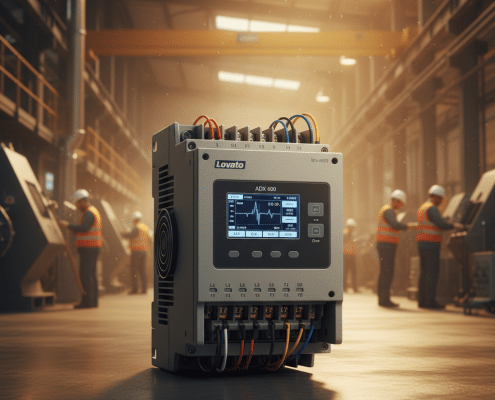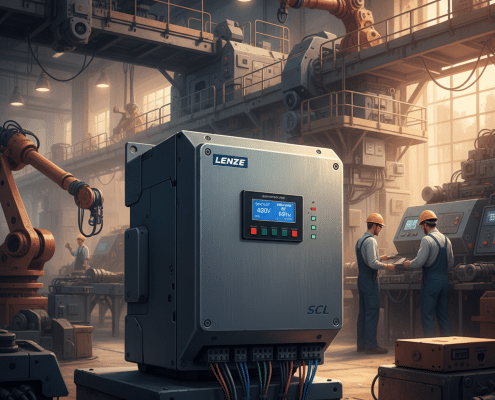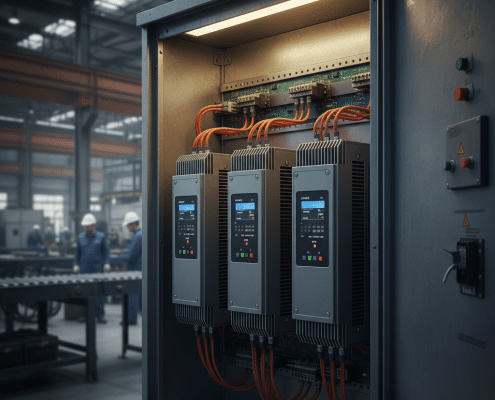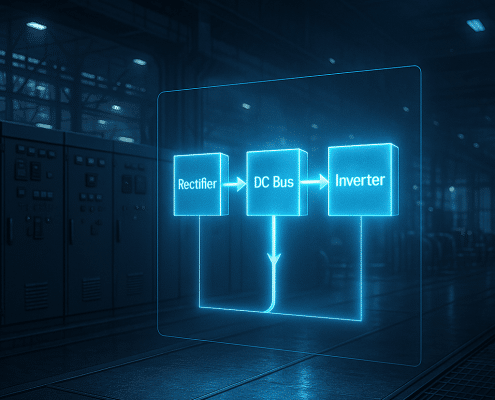
Precision Electric Pro-Phase Rotary Phase Converters Guide
Choosing the right 3-phase power converter is a critical decision for any workshop, farm, or industrial application. If you have single-phase power but need to run heavy-duty machinery, you understand the challenge of finding a reliable solution. This comprehensive buyer's guide is dedicated to the Precision Electric Pro-Phase series, a leading name in performance and durability. We will walk you through the essential technical specifications, compare the most popular models head-to-head, and discuss real-world applications to help you make a confident investment in your operations. Whether you're upgrading an old system or installing a new one from scratch, our expert analysis and collection of Pro-Phase converter reviews will ensure you select the perfect unit for your specific power needs. Don't risk equipment damage or inefficiency with an improper setup—read our complete guide to get it right the first time and unlock the full potential of your three-phase machinery.

Lovato ADX Softstarters: A Technical Guide for Engineers
Looking to improve motor longevity and operational efficiency in your industrial applications? Our comprehensive technical guide to Lovato ADX softstarters is your essential resource for mastering these advanced devices. We dive deep into the core technical specifications, covering everything from proper model selection based on load type and power requirements to step-by-step wiring instructions and intuitive parameter setup. Discover how the advanced features of the ADX series provide superior protection against overloads, underloads, and phase imbalances, significantly reducing mechanical stress and electrical strain during motor startup and shutdown. This article breaks down complex configurations, explains diagnostic capabilities, and offers practical troubleshooting tips to resolve common issues quickly and minimize downtime. For electrical engineers, panel builders, and maintenance technicians aiming to optimize motor control systems, understanding the full capabilities of these reliable soft starters is absolutely key. Get the expert insights you need to ensure smooth, efficient, and safe performance in all your critical industrial operations, boosting reliability and extending the life of your equipment.

Lenze AC Tech SCL Variable Frequency Drives VFDs: Guide
Struggling with your Lenze VFD programming? This in-depth technician's guide provides clear, step-by-step instructions for the SCL series. We cover everything from initial setup and parameter configuration to advanced AC motor drive troubleshooting techniques that save you time on the factory floor. Whether you're a seasoned pro or new to the field, this manual will help you optimize performance, diagnose common faults, and minimize costly downtime. Get expert insights and practical examples to master these powerful variable speed controllers.

Guide to Hitachi SJ700D Variable Frequency Drives VFDs
Unlock the full potential of your industrial machinery with our expert guide focused on Hitachi VFD programming. This comprehensive tutorial is specifically designed for technicians and engineers working with the powerful SJ700D series inverter. We translate complex technical jargon into simple, actionable steps, covering everything from initial setup to advanced parameter adjustments for optimal performance. Are you struggling with specific SJ700D fault codes? We go beyond the standard Hitachi SJ700D manual, providing practical insights and real-world examples to help you master this essential Hitachi variable speed drive. Enhance your operational efficiency, reduce energy consumption, and minimize costly downtime by learning to confidently program and troubleshoot your equipment.

Eaton H-Max Variable Frequency Drives VFDs: A Guide
Struggling with your Eaton H-Max VFDs? This comprehensive guide is your go-to resource for effective troubleshooting and maintenance, designed to minimize downtime. We dive deep into common issues, providing clear, step-by-step solutions that save you time and reduce operational costs. Learn how to quickly and accurately interpret H-Max drive fault codes and get expert tips on Eaton VFD programming to optimize your motor's performance and energy efficiency. Whether you're an experienced technician or new to this equipment, our overview simplifies complex problems for the entire eaton h-max variable frequency drives vfds series. Stop searching through dense technical manuals and get the practical, actionable answers you need right here to keep your operations running smoothly.

ABB ACS800 Variable Frequency Drives VFDs: A Tech Guide
Are you a technician looking to master the ABB ACS800 series? This comprehensive guide is your ultimate resource for everything related to abb acs800 variable frequency drives vfds. We move beyond the basic manual to offer practical, real-world insights. Inside, you'll find advanced troubleshooting flowcharts to diagnose issues with speed and precision, alongside best practices for installation and parameter setup to ensure optimal performance from day one. Learn the secrets to preventative maintenance that can extend the life of your drives and prevent costly downtime. We also decode the most common fault codes, providing clear, step-by-step solutions to get your systems operational in record time. Stop wasting hours searching through dense technical documents. This guide translates complex information into actionable, easy-to-understand steps, empowering you to handle any ACS800 challenge with confidence. Elevate your expertise and become the go-to technician for these powerful and versatile VFDs.

Benshaw MX4PB Softstarters: A Troubleshooting Guide
Experiencing costly downtime with your industrial motors? This comprehensive guide simplifies troubleshooting for all Benshaw MX4PB softstarters. We provide clear, step-by-step instructions to diagnose and resolve the most common operational issues, from frustrating startup failures to unexpected trip conditions. This guide is your go-to resource for deciphering complex Benshaw MX4PB fault codes, helping you quickly identify the root cause of any problem. Whether you're a seasoned technician or new to the equipment, you will find actionable solutions to get your critical systems back online efficiently. Stop guessing and start solving. Dive into our detailed manual to dramatically reduce your maintenance time and ensure your Benshaw motor starters operate at peak performance.

Frequency Drive Controller: A Guide to Energy Savings
Looking to enhance motor efficiency and slash energy costs? A frequency drive controller is the solution. Often called a variable frequency drive or VFD, this device offers precise AC motor speed control, leading to significant energy savings and improved operational performance. Our guide breaks down exactly how these controllers operate, from basic principles to advanced settings. We walk you through installation, common troubleshooting issues, and provide actionable tips to maximize your system’s efficiency. Whether you're an engineer, technician, or plant manager, this article delivers the expert knowledge needed to effectively manage an inverter drive and get the most from your investment.

Siemens VFD Drives: A Beginner’s Selection Guide
Choosing the right Siemens variable speed drive can be a daunting task, especially for beginners navigating the complex world of industrial automation. With a wide array of models and technical specifications, how do you ensure you select the perfect drive for your motor control needs? This comprehensive guide is designed to demystify the entire selection process. We break down essential terminology in simple terms, from volts and amps to communication protocols. You'll learn the key features to look for and our step-by-step process will walk you through evaluating your application's requirements, helping you match the perfect drive for optimal performance and energy efficiency. Stop the guesswork and start making an informed decision that will benefit your operations for years to come.

ABB Variable Frequency Drive: Complete Guide
Discover how an ABB variable frequency drive transforms motor efficiency, slashes utility costs, and extends equipment life. Our latest deep-dive compares ABB with Yaskawa, Eaton, Lenze, and Hitachi, highlights real-world ROI case studies, and outlines key standards for worry-free integration. Read the full guide and see which drive fits your application — plus download our selection checklist to start saving today.

What Is VFD? Industrial Guide to Variable Frequency Drives
Discover what a VFD really does—and how precision speed control slashes energy bills up to 50 %, soft‑starts motors to extend equipment life, and feeds real‑time data to your automation platform. Our latest guide walks you through core components, key standards, and top‑rated drives from ABB, Yaskawa, Eaton, and more—plus actionable tips for flawless installation. Ready to turn wasted kilowatts into profit? Dive in below.

PowerFlex 753 Replacement Guide: Cut Costs Without Downtime
Looking to shrink maintenance costs without sacrificing reliability? Our latest guide reveals how swapping out legacy PowerFlex 753 drives for modern ABB, Yaskawa, Eaton, or Lenze alternatives can slash hardware spend by 30 % and cut downtime hours in half—backed by real-world case data from 50 recent change-outs. Discover the five-step migration plan, side-by-side drive comparisons, and quick-start resources that put savings on your balance sheet this quarter.





